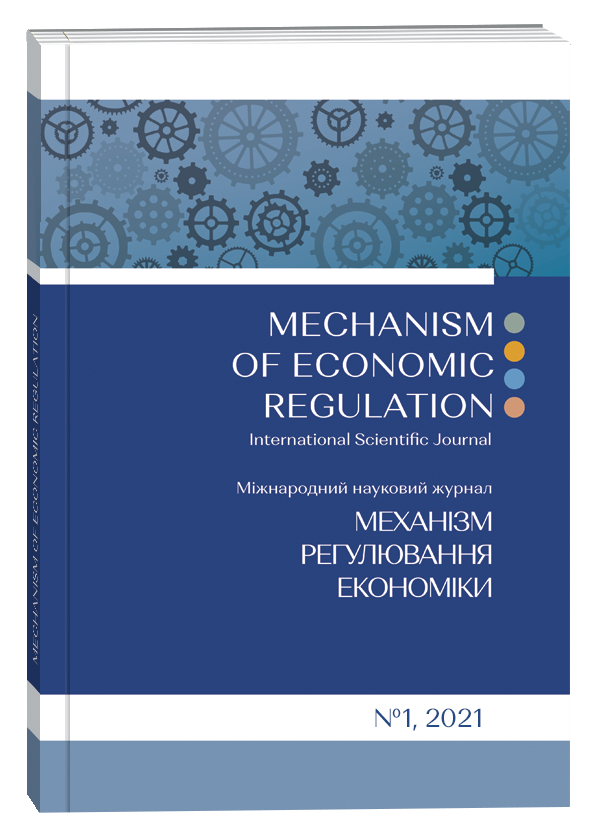MODERN TRENDS IN THE PRODUCTION OF RENEWABLE ENERGY: THE COST BENEFIT APPROACH
Abstract
In the article modern trends in the production of renewable energy were analyzed. It was determined that renewable energy sources have many undeniable advantages. First of all, they are much more environmentally friendly than traditional methods of generating energy based on the combustion of fossil fuels. Another advantage of renewable energy sources is their distribution. Unlike traditional energy fuel sources that units possess, renewable energy sources are available to most of the world's inhabitants. It was considered that today in the country there are a number of motivational tools that stimulate the development of green energy. It was proved that the ways of sustainization of the energy sector are associated with three main areas of energy use: electricity generation; heating and cooling of premises; driving vehicles. A system of subsidies for primary investments (purchase and installation of equipment), as well as the commercialization of "green" electricity (costs of entering the market, partial insurance of risks), is applied. It was determined that a separate page in the formation of alternative energy is the rivalry of two directions of its development, based on the creation of concentrated and deconcentrated (distributed) power plants. The first focuses on the concentration of production energy units (solar panels or wind turbines) in one area. The second direction is associated with the deconcentrating of energy sources, that is, the dispersal of individual capacities both across the territory and by forms of ownership. The transition to renewable energy sources is critical for most countries. This is one of the most important steps towards ensuring their energy independence and further restructuring of economic systems towards the formation of a “green” economy. It is gratifying that, along with other countries, Ukraine is making its efforts in this.
References
Banos, R., Manzano-Agugliaro, F., Montoya, F. G., Gil, C., Alcayde, A., & Gómez, J. (2011). Optimization methods applied to renewable and sustainable energy: A review. Renewable and sustainable energy reviews, 15(4), 1753–1766.
Dincer, I. (2010). Renewable energy and sustainable development: a crucial review. Renewable and sustainable energy reviews, 4(2), 157–175.
Dudin, M. N., Frolova, E. E., Protopopova, O. V., Mamedov, O., & Odintsov, S. V. (2019). Study of innovative technologies in the energy industry: nontraditional and renewable energy sources. Entrepreneurship and Sustainability Issues, 6(4), 1704.
Foster, R., Ghassemi, M., & Cota, A. (2009). Solar energy: renewable energy and the environment. CRC press.
Egli, F., Steffen, B., & Schmidt, T. S. (2018). A dynamic analysis of financing conditions for renewable energy technologies. Nature Energy, 3(12), 1084–1092.
Kaltschmitt, M., Streicher, W., & Wiese, A. (Eds.). (2007). Renewable energy: technology, economics and environment. Springer Science & Business Media.
Lund, H. (2017). Renewable energy strategies for sustainable development. Energy, 32(6), 912–919.
Nelson, V., & Starcher, K. (2018). Wind energy: renewable energy and the environment. CRC press.
Østergaard, P. A., Johannsen, R. M., & Duic, N. (2020). Sustainable development using renewable energy systems. International Journal of Sustainable Energy Planning and Management, 29, 1–6.
Panwar, N. L., Kaushik, S. C., & Kothari, S. (2011). Role of renewable energy sources in environmental protection: A review. Renewable and sustainable energy reviews, 15(3), 1513–1524.
Quaschning, V. (2016). Understanding renewable energy systems. Routledge.
Zobaa, A. F., & Bansal, R. C. (2011). Handbook of renewable energy technology. World Scientific.
Global Electricity Review. EMBER. 20.03.2020. URL : https://ember-climate.org/wp-content/uploads/2020/03/Ember-2020GlobalElectricityReview-PrintA4.pdf (accessed on 20.09.2020)
Jones D., Graham E., Tunbridge P. Wind And Solar Now Generate One-Tenth Of Global Electricity. Global half-year electricity analysis. EMBER. 13.08.2020. URL : https://ember-climate.org/project/global-electricity-h12020/ (accessed on 20.09.2020)
King, J. Could renewables become the top UK power source of 2020? Renewable energy world. 24.08.2020. URL : https://www.renewableenergyworld.com/2020/08/24/could-renewables-become-the-top-uk-power-source-of-2020/#gref (accessed on 15.09.2020)
Renewables gained ground in Brazil in 2019. Hydro Review. 27.07.2020. URL : https://www.hydroreview.com/2020/07/27/renewables-gained-ground-in-brazil-in-2019/#gref (accessed on 02.10.2020)
The world’s biggest solar power plants. PowerTechnology. 10.01.2020 URL : https://www.power-technology.com/features/the-worlds-biggest-solar-power-plants/ (accessed on 02.10.2020)
Top 10 biggest wind farms. PowerTechnology. 25.07.2020 URL : https://www.power-technology.com/features/feature-biggest-wind-farms-in-the-world-texas/ (accessed on 02.10.2020)


